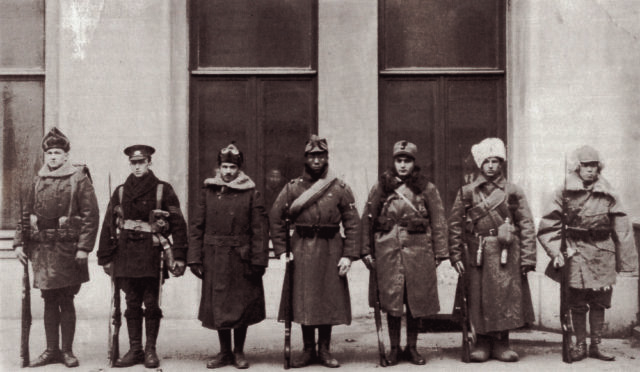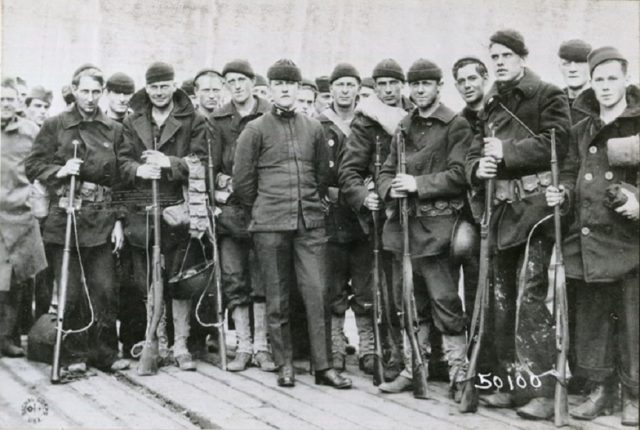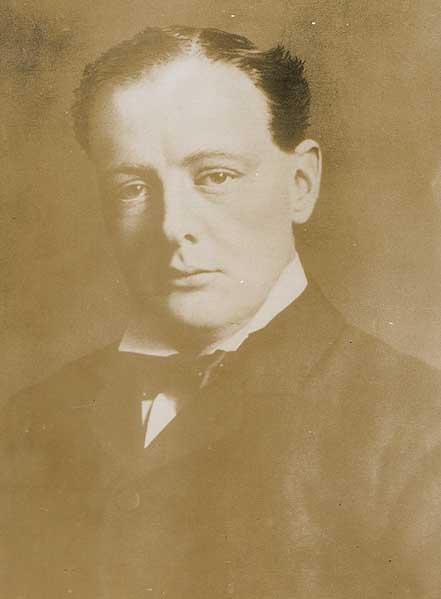War History Online presents this Guest Article by Damien Wright
On the day the Armistice was signed, 11 November 1918, British, US and Canadian troops were engaged in a desperate defence of the small village of Tulgas against a large number of attackers dressed in white smocks as camouflage against the snow. The situation was so dire that the Canadian gunners were firing over open sights, the drivers and veterinary section taking up rifles to defend the gun pits.
With the enemy on the verge of swarming the Canadian position, the situation was saved by a bayonet charge by Royal Scots who pushed the attackers from the guns after fierce hand to hand fighting. Enfilading fire from the US troops and Royal Scots caused further casualties and prevented the enemy from bringing up reinforcements. Unable to force the Allies from the village the attackers withdrew.
The battle at Tulgas had not been a last ditch attack by the Germans before signing the Armistice but had rather taken place some 3,000 miles away in a remote corner of the world on a battlefield long since forgotten. For Allied troops fighting the Bolshevik (later known as Soviet) Red Army in North Russia, news of the Armistice did not reach the front line until a day later and was greeted with bemusement

One of the first actions taken by Lenin after his Bolsheviks seized power in the Russian Revolution of November 1917 was to cease all hostilities with the Central Powers on the Eastern Front, considered a great betrayal by the Allies. British troops had originally been sent to Russia in mid-1918 to train, equip and support local ‘White Russian’ forces in an attempt to overthrow the Bolsheviks from power and reinstall a government which would resume hostilities on the Eastern Front, thereby taking significant pressure away from the hard-pressed Allied forces in France.

The signing of the Armistice did not end the war for Allied troops fighting in Russia (Britain, US, Canada, France, Italy, Serbia, Poland, Japan all sent troops) and the campaign continued in earnest. Although the US and Canadian governments withdrew their forces in July 1919, the British pushed on alone (largely driven by vehement anti-Bolshevik Secretary of State for War Winston Churchill) and did not finally withdraw from Russia until mid-1920 having failed in their attempt to overthrow the Bolsheviks which resulted in the establishment of the Soviet Union in 1922.
Sadly the sacrifice of Allied troops in Russia after the Armistice, remains largely forgotten today despite a number of historical ‘firsts’ and ‘lasts’ which occurred during the campaign. The first tanks to capture Stalingrad were British albeit it was June 1919 and the city still retained its original name ‘Tsaritsyn’. The first Soviet submarine kill in history was a Royal Navy destroyer HMS Vittoria sunk by torpedoes fired by Soviet submarine Pantera in the Eastern Baltic Sea in August 1919. The first air-to-air battles fought by the Soviet Air Force were against aircraft of the Royal Air Force in the skies over North Russia. The first Prisoners of War held by the Soviets in Moscow were British and US troops captured on the northern front.

The last British servicemen to be killed by the German Army during the First World War were nine Royal Navy sailors from cruiser HMS Dragon, struck by shells fired by German ‘Iron Division’ troops ashore in Latvia who considered the Armistice to apply to the Western Front only and not themselves in the Baltic. It is a little-known fact that more than 350 US troops died fighting the Bolsheviks, the remains of most exhumed and repatriated to their homeland in 1929. The bodies of more than a thousand British and Commonwealth servicemen who died fighting the Soviets today remain buried in Russian soil.
For Allied troops fighting in Russia, the war did not end with the Armistice. There would be many more months of bitter fighting in extreme conditions in a campaign that has largely been left out of the history of the First World War before they could return home.
The author’s book Churchill’s Secret War With Lenin: British and Commonwealth Military Intervention in the Russian Civil War, 1918-20 (Helion & Company, 2017) is currently available.
Churchill’s Secret War With Lenin: British and Commonwealth Military Intervention in the Russian Civil War, 1918-20
After three years of great loss and suffering on the Eastern Front, Imperial Russia was in crisis and on the verge of revolution. In November 1917, Lenin’s Bolsheviks (later known as ‘Soviets’) seized power, signed a peace treaty with the Central Powers and brutally murdered Tsar Nicholas (British King George’s first cousin) and his children so there could be no return to the old order. As Russia fractured into loyalist ‘White’ and revolutionary ‘Red’ factions, the British government became increasingly drawn into the escalating Russian Civil War after hundreds of thousands of German troops transferred from the Eastern Front to France were used in the 1918 ‘Spring Offensive’ which threatened Paris. What began with the landing of a small number of Royal Marines at Murmansk in March 1918 to protect Allied-donated war stores quickly escalated with the British government actively pursuing an undeclared war against the Bolsheviks on a number of fronts in support of British trained and equipped ‘White Russian’ Allies. At the height of British military intervention in mid-1919, British troops were fighting the Soviets far into the Russian interior in the Baltic, North Russia, Siberia, Caspian and Crimea simultaneously. The full range of weapons in the British arsenal were deployed including the most modern aircraft, tanks and even poison gas. British forces were also drawn into peripheral conflicts against ‘White’ Finnish troops in North Russia and the German ‘Iron Division’ in the Baltic…
